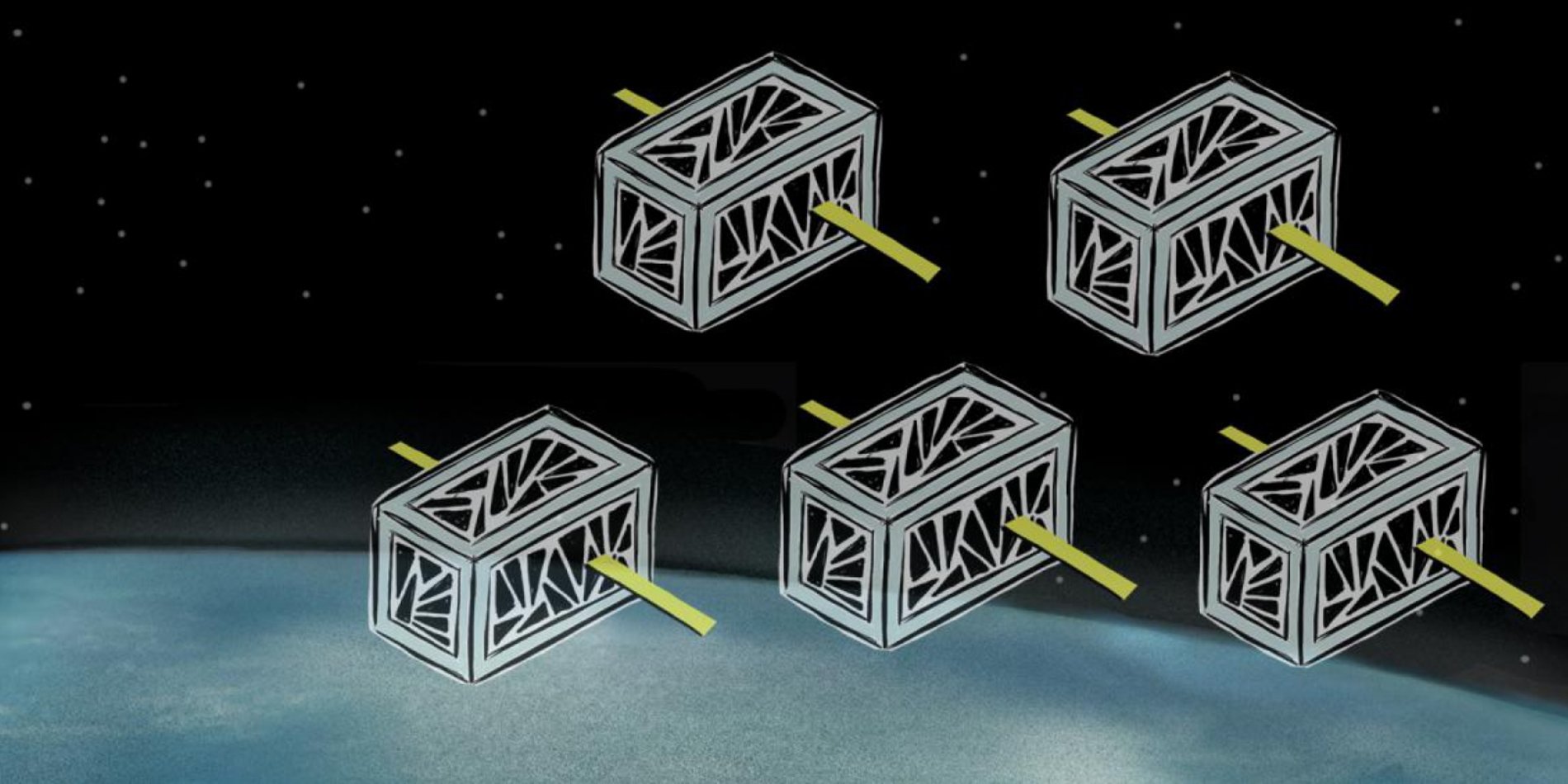How swarms of small satellites could revolutionize space exploration
It’s expensive to put large objects into orbit. That’s why many space missions have shifted from satellites, which can weigh as much as a truck, to smaller platforms, some as tiny as a fist. Now, Simone D’Amico, an assistant professor of aeronautics and astronautics at Stanford, wants to increase the usefulness of these small satellites by developing what he calls relative navigation technologies. The idea, he says, is to allow tiny spacecraft to fly relative to one another in formations of two or more, with larger aggregations being called swarms.
D’Amico says a team of small satellites would give missions greater flexibility. Should one go down, the remainder could compensate. And more satellites focused on the same mission would provide additional observation points, which will pay off greatly in delivering more detailed and higher quality data. Scientists and engineers around the world expect that satellite formation-flying will provide breakthroughs in astronomy and astrophysics, planetary science and space exploration.
Some satellite formations have already been deployed or are in the works. Among them is a public-private consortium of German aerospace labs that has launched the TanDEM-X mission, which has two satellites orbiting Earth, only 1,000 feet apart, working together to take more precise elevation measurements of Earth’s surface. The trailing satellite has a propulsion system that allows ground controllers to finely adjust its position relative to the leading satellite, which allows the satellites to work together, just not independent of human control — yet.
The U.S. Space Program is also flying satellites in formation. Last year NASA achieved a milestone when four satellites in the Magnetospheric Multiscale (MMS) mission flew in the most complex formation ever placed in orbit to study the Earth's magnetosphere. The satellites formed a diamond shape, each unit about six miles apart, orbiting Earth at 15,000 miles per hour. This is one of the first missions to deliver on the promise of accurate, simultaneous data being derived by multiple coordinated satellites.
Still, these missions employ satellites weighing tons and rely on expensive ground control to meet their objectives, thus costing hundreds of millions of dollars. The vision of swarms of small satellites cooperating to do space missions is just now coming into focus, and there are still a number of technical challenges to be tackled. Ultimately aerospace engineers hope to make satellite formations autonomous, allowing spacecraft to navigate relative to one another without human intervention because the communications lag time makes it challenging to put a controller on Earth in the role of having to make course corrections to multiple, far distant satellites.
To make autonomous missions possible, it is first necessary to understand how spacecraft move relative to one another, whether they are in close proximity or millions of kilometers apart. So D’Amico and his team are developing models that allow quick and accurate computation of the relative position of multiple spacecraft that take into account the complex effects of things like gravity, solar radiation pressure and atmospheric drag on a spacecraft in orbit.
These models will be included in guidance, navigation and control systems that will allow spacecraft formations to maintain precise formations in a fuel-efficient manner. “This is what I call relative astrodynamics,” D’Amico said at an August lecture at the nonprofit Search for Extraterrestrial Intelligence Institute. It’s “the magic behind the scenes, the enabler behind the technologies.”
D’Amico and his PhD student, Adam Koenig, are currently working on a proof-of-concept mission for an autonomous satellite formation called mDOT, short for miniaturized distributed occulter/telescope. In simple terms, mDOT will consist of two satellites that will work together in Earth’s orbit. Their mission will be to take digital images with the goal of finding planets in the vicinity of nearby stars such as Canopus, Polaris or the Alpha Centauri system.
But planet hunting with telescopes is tough. The instrument must detect the dim reflected light of a planet ten billion times fainter than the star it orbits. That is about a thousand times more difficult than spotting a firefly sitting on the edge of a searchlight. To see planets orbiting stars, something needs to block the starlight so the telescope can focus on the dimmer object; it’s like raising a hand to shield your eyes against the sun.
Translating this hand into a space mission, D’Amico envisions one mDOT microsatellite equipped with a flower-shaped star shade. It would fly a few hundred kilometers in front of a second, smaller satellite with a telescope and camera. Success would depend on keeping the camera satellite operating within the 8-inch shadow cast by the star shade — a test case for an autonomous control system based on relative astrodynamics.
D’Amico sees mDOT as a demonstration project for similar missions on a larger scale. For instance, NASA is working on a mission concept called Exo-S, which includes a star shade 15 times larger than mDOT’s and 50 times further away from the telescope.
Both NASA and the Air Force recently awarded D’Amico’s lab with competitive grants to improve the techniques of autonomous guidance, navigation and control for spacecraft formations. In the frame of NASA’s Small Spacecraft Technology Program, D’Amico will help develop a swarm of CubeSats with a decentralized navigation system that will use modern global navigation satellite signals to continuously share and adjust their positions to centimeter-level accuracy.
Ultimately, the accuracy and adaptability offered by swarms of tiny satellites will give science a new way to chart and explore the vastness of space as well as the complexity of our planet.



